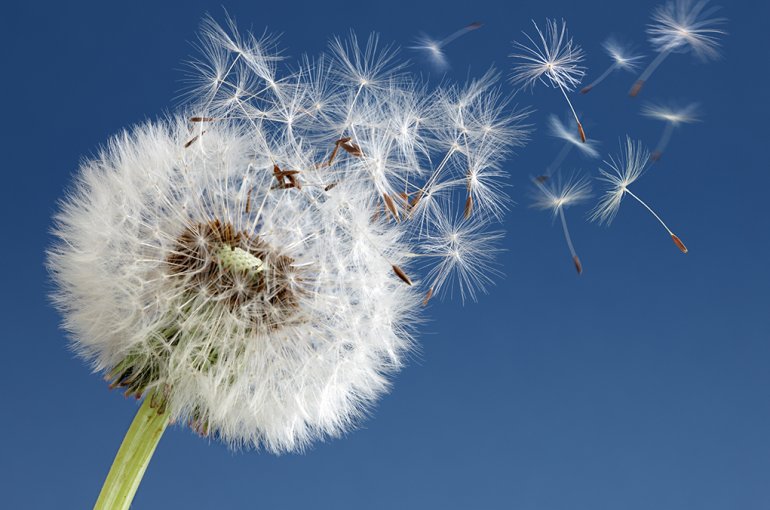Birds and seeds make optimal use of wind
Dissertation Jelle Treep

Plants release their seeds at much lower wind speeds than expected. This is ‘smart’, because if they wait too long for strong winds, the seed could be lost due to damage or predation. This is one of the conclusions of the PhD research conducted by Jelle Treep, who successfully defended his dissertation on Wednesday, 21 March. In his research, he shows how a combination of model simulations and observations can be used to analyse and explain the movement patterns of birds and plants.
Plants and birds are inventive in taking advantage of environmental factors, such as wind, to move themselves or their seeds in search of food or suitable habitats. PhD Candidate Jelle Treep studied the roles of several of these factors using a combination of field observations, GPS data and computer simulations. These demonstrate that the dispersal patterns of plant seeds are much more attuned to the spatial distribution of habitats and the degree of changes in the landscape than had previously been thought.
Avoiding competition
“Plants depend on wind, water or animals to disperse their seeds”, Treep explains. “My research shows that the best dispersal strategies focus both on reaching new habitats and on avoiding competition between offspring. The results of my research show how evolutionary processes lead to an optimal balance between the two.”
Species under pressure
Today’s dispersal strategies are the result of a long process of optimisation for a specific spatial distribution of habitat. “Landscapes are currently undergoing rapid changes due to human interventions. As a result, these optimisations may not be appropriate anymore and plant species may decline, because many of their seeds do not end up in suitable habitat”, says Treep, on the relevance of his research.
Cost-benefit
Using a combination of simulations and field observations, Treep also showed that plants that disperse their seeds via wind make a cost-benefit analysis to time their seed release. Waiting for strong winds gives seeds a better chance to move over larger distances, but also presents risks in the form of seed damage or predation. If you do not include such risks in simulation models, plants would be expected to release seeds at wind speeds of 8-10 meters per second. However, a model that includes risks suggests release would be optimal at wind speeds of 5-6 m/s, which corresponds to the actual wind speeds at which Treep’s field observations showed that the seeds were released.
Ducks
Treep also studied the dispersal of plant seeds via dabbling ducks. Using GPS data of their daily flight movements, he showed that plant species whose seeds are transported by ducks are not as affected by the fragmentation of their habitats. The ducks adjust their flight patterns to the landscape and disperse the seeds accordingly over larger distances, and to suitable habitat for the plants.
Crucial
“Given the current speed of climate change and the fragmentation of natural areas, it is increasingly important that species which are under pressure can disperse to new habitats. Insights into the movements of animals and plant seeds are therefore crucial in order to preserve biodiversity, and should be included in nature- and landscape preservation plans”, Treep asserts. “Simulation models like the ones I have developed provide a useful support to such plans.”
This research was funded in part by NWO.
Dissertation
‘Flying cheap; modelling the passive movement of plants and animals’
Promotors: Prof. Merel Soons, Prof. George Kowalchuk, Utrecht University
Photo: iStock
Read more
Merel Soons appointed Professor of Plant Dispersal Ecology & Conservation
Article of Merel Soons and Erik Kleyheeg in Science as 'Editor's Choice'
Plants actively direct their seeds via wind or water towards suitable sites (publication in Functional Ecology)
Wintering ducks connect isolated wetlands by dispersing plant seeds (publication in Journal of Ecology)

